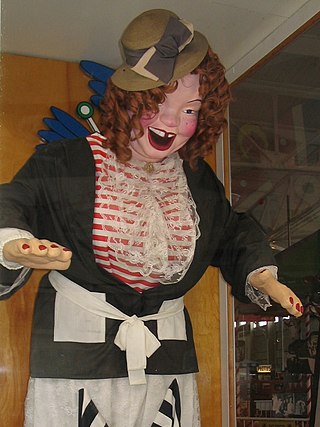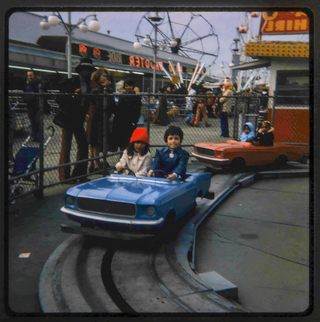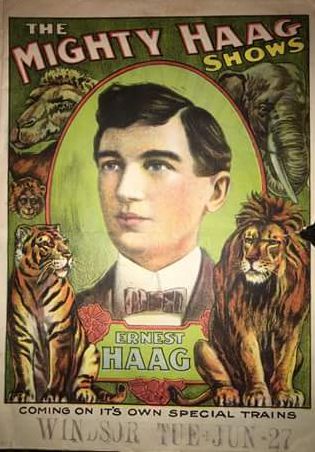Related Research Articles

In miniature wargaming, players enact simulated battles using scale models called miniature models, which can be anywhere from 2 to 54 mm in height, to represent warriors, vehicles, artillery, buildings, and terrain. These models are colloquially referred to as miniatures or minis.

The Oakland Seaport is a major container ship facility located in Oakland, California, in the San Francisco Bay. It is operated by the Port of Oakland port authority along with the San Francisco Bay Oakland International Airport. It was the first major port on the Pacific Coast of the United States to build terminals for container ships. As of 2022, it was the eighth busiest container port in the United States, behind the ports of Los Angeles, New York/New Jersey, Long Beach, Savannah, Houston, Virginia, and Seattle/Tacoma. Development of an intermodal container handling system in 2002 after over a decade of planning and construction positions the Oakland Seaport for further expansion of the West Coast freight market share. In 2019 it ranked 8th in the United States in the category of containers.
Playland, often called Rye Playland and also known as Playland Amusement Park, is an amusement park located in Rye, New York, along the Long Island Sound. Built in 1928, the 280-acre (110 ha) park is owned by the Westchester County government. Beginning in 2018 the park has been operated under contract by Standard Amusements.

A film poster is a poster used to promote and advertise a film primarily to persuade paying customers into a theater to see it. Studios often print several posters that vary in size and content for various domestic and international markets. They normally contain an image with text. Today's posters often feature printed likenesses of the main actors. Prior to the 1980s, illustrations instead of photos were far more common. The text on film posters usually contains the film title in large lettering and often the names of the main actors. It may also include a tagline, the name of the director, names of characters, the release date, and other pertinent details to inform prospective viewers about the film.

Roadside America was an indoor miniature village and railway covering 8,000 square feet (740 m2). Created by Laurence Gieringer in 1935, it was first displayed to the public in his Hamburg, Pennsylvania, home. The miniature village's popularity increased after stories were published about it in local newspapers, which prompted Gieringer to move it to a recently-closed local amusement park called Carsonia Park. This location, which supported more visitors, was open from 1938 to about 1940. To accommodate growing interest and build a larger display, Geringer then purchased land at what would be the miniature village's final location, a former dance hall in Shartlesville, Pennsylvania off of Interstate 78, approximately 20 mi (32 km) west of the Lehigh Valley, where the display reopened in 1953.

Laffing Sal is one of several animatronic characters that were built primarily to attract carnival and amusement park patrons to funhouses and dark rides throughout the United States. Its movements were accompanied by a raucous laugh that sometimes frightened small children and annoyed adults.

Shelburne Museum is a museum of art, design, and Americana located in Shelburne, Vermont, United States. Over 150,000 works are exhibited in 39 exhibition buildings, 25 of which are historic and were relocated to the museum grounds. It is located on 45 acres (18 ha) near Lake Champlain.

A vardo is a four-wheeled horse-drawn vehicle traditionally used by travelling Romanichal as their home. The name vardo is a Romani term believed to have originated from the Ossetic wærdon meaning cart or carriage. It is pulled by a single horse in shafts, sometimes with a second horse hitched on its right side outside the shafts to help pull heavier loads or assist in pulling up a hill. The vehicle is typically highly decorated, intricately carved, brightly painted, and even gilded. The Romanichal tradition of the vardo is seen as a high cultural point of both artistic design and a masterpiece of woodcrafter's art.
Point Isabel is a promontory on the eastern shore of San Francisco Bay in the Richmond Annex neighborhood of Richmond, United States.
Upsy Downsy is a brand developed by Mattel. It concerns two races of strange beings, one that lives rightside-up, the other upside-down. These psychedelic creatures and their fantasy world were featured in a short-lived line of colorful toys and story books for young children in 1970.

Rockaways' Playland was an amusement park that operated from 1902 to 1987 in Rockaway Beach in Queens, New York City. Bounded by Beach 97th and Beach 98th Streets between Rockaway Beach Boulevard and the Rockaway Beach and Boardwalk, Rockaways' Playland was created in 1902 by roller coaster designer LaMarcus Adna Thompson. By 1903 a ferry dock was added not far from the park, making it more convenient to reach than some of the competing amusement parks. The park was sold in 1927 to Robert Katlin, who added amenities such as a gym and swimming pool, and the following year to A. Joseph Geist, who achieved greater success than the previous owners. Between 1928 and 1970, Rockaways' Playland was extremely successful, drawing 175 million visitors. It closed in 1987 due to a sharp increase in the price of insurance.
The C. W. Parker Carousel is a carousel built in 1912 that is currently operating in the Burnaby Village Museum at Deer Lake Park in Burnaby, British Columbia. The carousel was built by the C. W. Parker Company and is also known as the Parker #119 and the Burnaby Centennial Parker Carousel. The carousel was the 119th such machine built by the C. W. Parker Company, earning it its "Parker #119" nickname. The carousel contains 41 horses and operates at a pavilion known as the Don Wrigley Pavilion located at one of the museum's two entrances, earning the entrance the name "Carousel Entrance".

Hopi katsina figures, also known as kachina dolls, are figures carved, typically from cottonwood root, by Hopi people to instruct young girls and new brides about katsinas or katsinam, the immortal beings that bring rain, control other aspects of the natural world and society, and act as messengers between humans and the spirit world.
Playland-Not-At-The-Beach was a non-profit, family-oriented museum in El Cerrito, California celebrating America's bygone amusements, operated entirely by volunteers.

Eldridge Park, located in Elmira, New York, is a famous amusement park, which opened around the turn of the 20th century. Covering roughly 15 acres (6.1 ha), it is dedicated to the memory of a local physician and is still in common usage.

Al G. Barnes Circus was an American circus run by Alpheus George Barnes Stonehouse that operated from 1898 to 1938.

The Circus Building is an exhibit building at Shelburne Museum in Shelburne, Vermont. It houses a collection of circus posters, Gustav A. Dentzel Carousel animals, and elaborately carved miniature circuses, including those by Roy Arnold and Edgar Kirk.

Tiny Town, in Springfield, Missouri, was the first city built in miniature and had over a thousand structures. A smaller village version was completed in 1919, while the larger full version was completed in 1925. It was motivated primarily by a local homebuilding promotion. The project involved 10,000 students from the eighteen public schools in Springfield. The superintendent of the school system was a key instigator of the project and used it as a teaching aid to instruct students in government, home-ownership and citizenship.

Mighty Haag Circus was started by American entrepreneur Ernest Haag in Shreveport, Louisiana. His circus toured continuously for over 40 years, from 1891 to 1938. During these years, the circus used a variety of types of transport: boat, carts, trains, horse-pulled wagons, and trucks. It was one of the largest traveling circuses in the United States.
The Nigerian artist Ben Enwonwu created a series of wooden sculptures for the London headquarters of the Daily Mirror in 1961. The sculptures subsequently disappeared from the newspaper's headquarters and were rediscovered and sold at auction in 2013.
References
- ↑ "Marcks Family Miniature Circus". 2018-01-26. Archived from the original on 2021-12-15.
What Don and his dad had spent 50 years of their lives doing is reproducing one day, June 30, 1930, when the Sells Floto Circus came to town.
- ↑ Ford, Dave (2004-03-19). "Playland's Peter Pan". San Francisco Chronicle. Retrieved 2007-09-22.
With prodding, Marcks recalled the carvings, and, with some coaxing, brought out steamer trunks full of the figurines - 300,000 in all. Tuck set him to work fixing them.
- ↑ Rahn, Antoinette (2018-05-12). "Hand-crafted miniature circus needs home".
One of the country's most expansive miniature circus, featuring figures hand-carved by a father-son duo over the course of five decades, is on the market.
- ↑ "The Playland Not at the Beach Auction". 2018-09-15.
A highlight is Circus World, a 300,000-piece hand carved miniature circus that took the late Don Marcks of El Cerrito 50 years to create. Each of its tiny elephants is unique - a curled trunk here, a quizzical expression there - all forty of them!